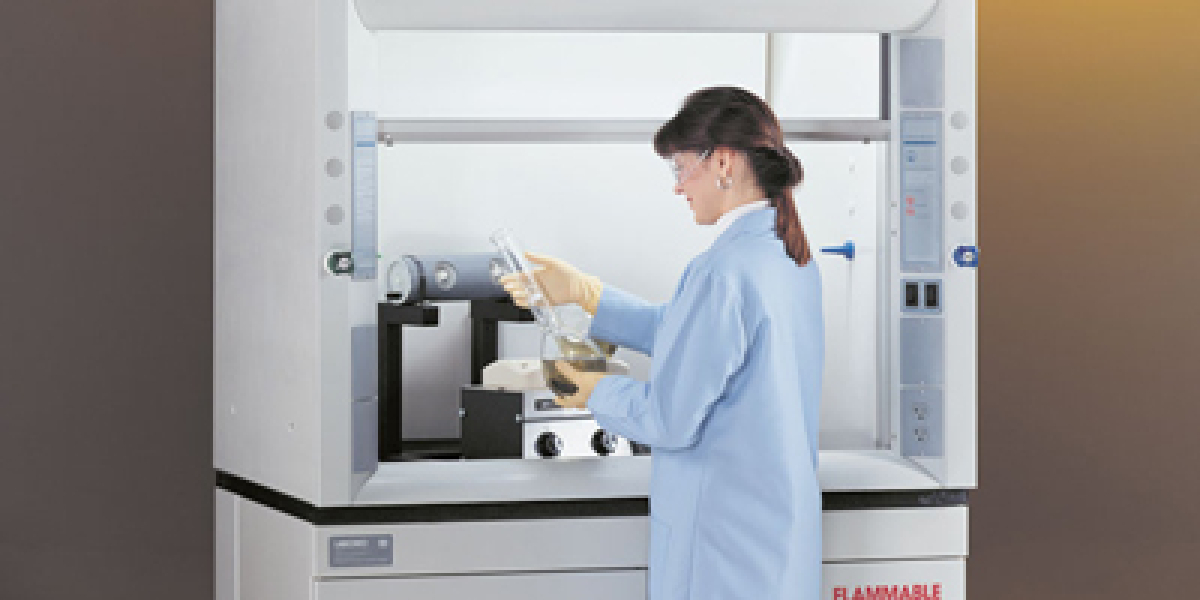Do I need an explosion-proof fume hood?

Determining whether you need an explosion-proof (EP) fume hood may seem like a daunting task. Really, there are just a few considerations to make to determine if an EP hood is needed for your application.
A common misunderstanding of EP hoods is that they are designed to contain an explosion. Actually, most manufacturers would define an EP hood as one that is modified to reduce spark potential, and consequently reduce the chances of igniting a flammable atmosphere. EP hoods are not designed to contain explosions.
An EP laboratory hood is equipped with specially designed electrical components, such as EP switches, receptacles and internal wiring. These EP components are not supplied by the fume hood manufacturer; rather they are supplied and installed on site by a licensed electrician in order to meet all state and local codes.
For this reason, all EP modified Labconco fume hoods come with and EP rated incandescent light fixture, and without bulbs, wiring, switches, or duplexes. Simply working with a flammable chemical is not justification for the use of an EP fume hood.
The inside of most fume hoods are void of any electrical components; the lighting is isolated from the interior via a piece of thick safety glass, the electrical duplexes and switches are positioned on the exterior, all the wiring is contained within the sidewall of the hood, and even the thermister or hot wire from the airflow monitor is in an isolated airstream.
From the factory, there is little to no spark potential on the inside of a standard fume hood. Combine this with a continuous stream of clean room air, and there is very little chance of flammable combustion inside the hood.
However, when working with flammable chemicals, the concentration should not exceed 25% of the Lower Explosive Limit (LEL). This is determined by calculating the “dilution factor” and comparing it to the volumetric rate of air flowing through a fume hood.
For example, assume we are evaporating 2 pints per hour of Methanol at 70° F.
From Industrial Ventilation 2.5: Minimum CFM = [(403)(SG)(100)(ER)(C)] / [(MW)(LEL%)(B)] Where SG is specific gravity, ER is evaporation rate in pints per minute, C is a safety factor between 4 and 12 (4 is used for 25% of LEL), MW is molecular weight, LEL is the Lower Explosive Limit as a percent, and B is a temperature constant (Use 1 for temperature up to 250° F, and use 0.7 for temperature above 250° F).
For Methanol, LEL is 6%, SG is 0.786, MW is 32.04, and from above we know that ER is 2/60, C is 4, and B is 1. Minimum CFM = [(403)(0.786)(100)(2/60)(4)] / [(32.04)(6)(1)] = 22 CFM
If you find that the minimum CFM required to sustain a concentration below 25% of the LEL surpasses your fume hood’s volumetric rate of air, or if there is a concern that your air handling equipment could fail, thus increasing the concentration of your flammable chemical above this threshold, you may want to consider an EP fume hood.
Additionally, if your fume hood is placed in an EP Laboratory, then all ventilation equipment will need to be EP rated as well, regardless of the kind of work going on inside the hood. This is because EP labs must be void of spark potential; this includes the electrical components outside of the fume hood’s airstream.
Most Labconco fume hoods are candidates for an EP modification. Find more information on our fume hoods, and please contact your Labconco Sales Representative, or call 800-731-0032, for ordering information and help determining if an EP hood is right for your application.
| chevron_left | Forensic ad debuts in October | Articles | Validating Labconco equipment using an RS232 port | chevron_right |






